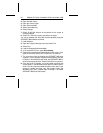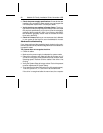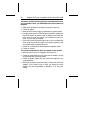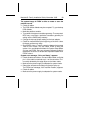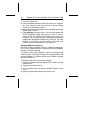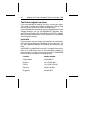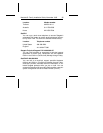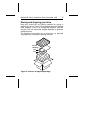
• Reboot the computer and make sure the drive spins up.
• Verify the System Setup drive type values.
• Check for I/O address conflicts.
The drive does not format to full capacity.
• Verify your computer’s System Setup drive-type values. One
of the following problems may have occurred: 1) the values
may be set for an incorrect drive type or translation geometry;
2) you may have entered a parameter value that exceeded the
physical capacity of the drive; 3) you selected a translation
geometry or drive type that does not take full advantage of the
drive’s capacity; or 4) the drive’s physical specifications ex-
ceed the translation geometry limits imposed by the BIOS.
Refer to “Standard setup” on page 20 if any of these cases is
true.
If you reset the System Setup drive-type value, you must
partition and high-level format the drive again.
• If you partitioned the drive into individual logical drives, you
may need to make the partitions smaller so that the computer
can use all of the drive’s capacity.
• If your computer supports LBA mode, you may need to enable
an LBA mode function in System Setup to get the drive’s full
capacity. Refer to your computer’s reference guide.
• You can use the EZ-Drive software to install the drive.
DOS messages “Disk Boot Failure,” “Non-System Disk,” or
“No ROM Basic - SYSTEM HALTED,” appear.
• Reinstall the DOS system files using the DOS SYS utility.
• Check all cables.
30 Medalist SL Family Installation Guide, November 1995





